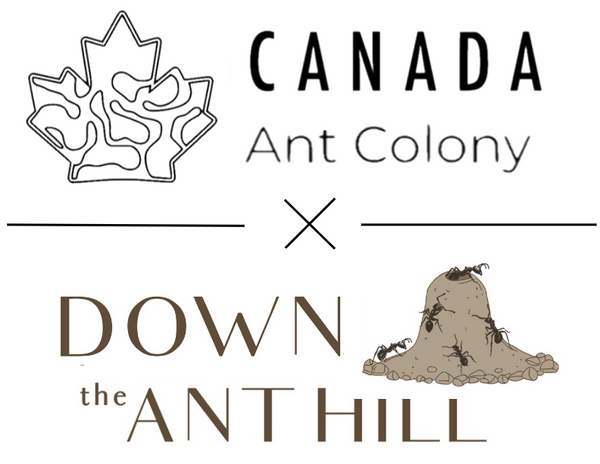Messor minor is a poorly known species of Harvester Ant found all over the Mediterranean and the Middle East. It is a polymorphic red species with larger soldiers and smaller minor workers. Coming from a more tropical area, these ants do not require hibernation and are active year round.
If you're looking to purchase Messor minor (Canary Islands Harvester Ants), check out the bicolor and black Harvester ants for sale here!
These ants are particularly suited for displaying digging behaviour, as they will need to excavate chambers for both their brood and for storing seeds. As a result, they are also particularly destructive, and care should be taken to ensure they cannot escape.

Taxonomy
-Familia: Formicidae/ants (Latreille, 1809)
--Subfamilia: Myrmicinae (Lepeletier, 1835 )
---Tribus: Stenammini (Ashmead, 1905)
----Genus: Messor (Forel, 1890)
------Species: Messor minor (Andre, 1883)
-------Subspecies: Messor minor maurus (Barquin, 1981); Messor minor hesperius (Santschi, 1927), Messor minor capreensis (Santschi, 1927), Messor minor calabricus (Santschi, 1927)
Basic information
Origin: around the Mediterranean sea (Morocco, southern France, Italy, Libya, Tunisia) and the Middle East (Israel and Palestine, Saudi Arabia, Iran, and Iraq) and
Habitat: Highlands in the Middle East, Steppe Areas
Colony: Monogynous
Colony size: 15000-50000 workers
Colony age: up to 25 years
Founding: Claustral
Workers: Polymorphic
Nest Areas: Soil Nests
Feeding: Graniphagy, Zoophagy (seeds, grains, nuts, almonds and dead insects)
Hibernation: None
Reproduction: Nuptial flight in September - November
Appearance/Coloration
Workers: glossy, black abdomen, majors heads red-brown or black
Queen: black body, head and thorax
Males: black, small head, very hairy
Size
Workers: 4-11mm
Queen: 11-12mm
Males: 7-8mm
Development time
Workers: 6 weeks, if heated
Antkeeping information
Recommended for beginners: Yes, but starting colonies can be sensitive to light and Messor can grow fast.
Temperature: Outworld: 25 - 30°C, Nesting area: 23 - 28°C
Humidity: Outworld: 30 - 50%, Nesting area: 50 - 70%
Nest types: Messor require a dry area and a wet area. A hard plaster or even an acrylic nest can go a long way.
Formicarium size: Even small colonies should be provided with a decent sized outworld. From there on the setup should fit the current colony size.
Formicarium accessories: Heat source (heat mate, heating cable or heat lamp).
Temper/Behavior
Messor barbarus are very active, creative ants that love to dig, build and modify their environment to fit their needs. In the wild, Messor colonies will clear out some of the space from their surroundings. This behaviour can be very annoying for ant-keepers trying to decorate their outworlds.
Additional antkeeping information
Messor need lots of water in order to construct their nests. Messor minor will often drown in open pools of water and so any water should be supplemented with an absorbent material.
Messor species will often chew up seeds into a form of "ant bread" which is distributed throughout the colony, and so do not share food via social stomachs.
Diet & Nutrition
Sugars/Carbohydrates
Messor harvester ants get carbohydrates from seeds. Although feeding seeds is the most common method, most cereals can work as well (but only as a supplement,) as they are missing most other nutrients. Young colonies (before majors are born) require small seeds, such as dandelion or poppy seeds.
Messor will harvest as many seeds as they can and can build supplies for months, which leads to a pause in foraging.
Protein
Messor do not need to be fed any additional protein outside of their seeds, but they will do better with a range of feeder insects or "human" proteins such as eggs and unseasoned chicken.
